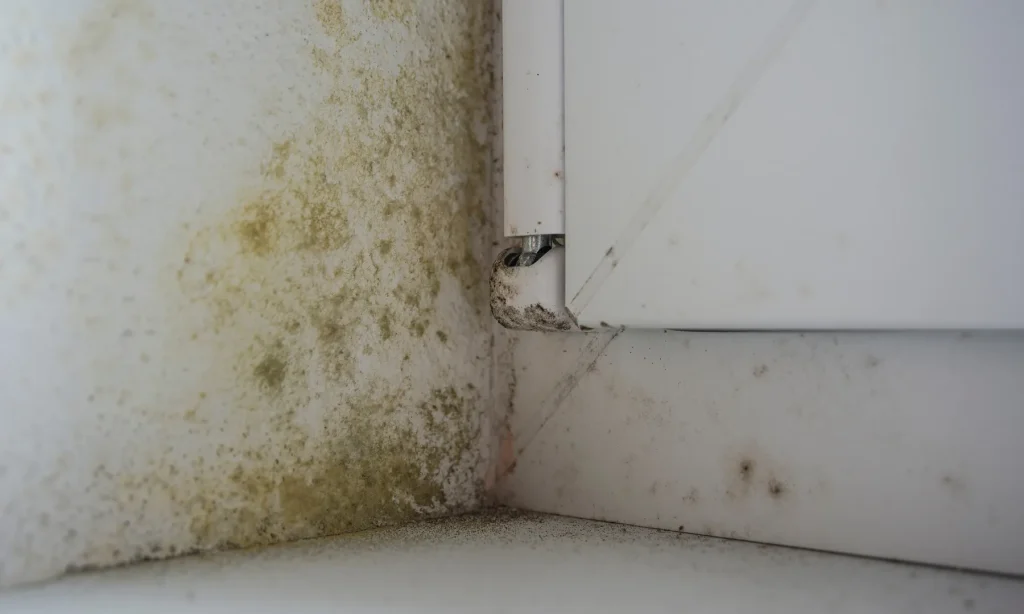Imagine this: one day your bright, goofy kid bursts into tears over assignments, starts blinking or clearing their throat every few seconds, and you’re staring down a recognition of PANS or PANDAS. Nothing prepares you for that fog of frustration, especially when docs promise antibiotics will save the day, but all you see is more anxiety and the same tics. So, what if the question isn’t just “what infection caused it?“ but “what’s throwing your child’s whole immune system off?“
You’re not alone if you’ve Googled late at night, searching for a silver-bullet remedy or scrolling through parent forums, only to land in a sea of overwhelm. The good news? There is a better path, a way that brings clarity, actual answers, and actionable hope by connecting science to PANS and PANDAS holistic treatment. Let’s peel back the curtain on how a comprehensive, functional medicine approach flips the script on tics, PANS, and PANDAS. Get ready for stories, real talk, and practical tips that just might change everything for your family.
Key Takeaways
-
A holistic treatment for PANS and PANDAS addresses immune dysfunction and neuroinflammation rather than simply treating infections with antibiotics.
-
Functional medicine uses targeted testing to pinpoint environmental triggers, food sensitivities, and gut imbalances contributing to tics and mood swings.
-
Repeated use of antibiotics can harm the gut microbiome and often fails to create lasting improvement in PANS and PANDAS symptoms.
-
Reducing exposure to mold, mycotoxins, heavy metals, and inflammatory foods is vital for reversing tic disorders naturally.
-
A personalized, stepwise plan—combining detox support, gut restoration, nutrition, and immune modulation—offers a hopeful path toward lasting recovery for children with PANS and PANDAS.
Table of Contents
What are PANS and PANDAS? A Functional Medicine Lens
If you’re knee-deep in this journey, you’ve probably heard those acronyms tossed around at every specialist’s office. But what do they actually mean, especially through a holistic lens?
PANDAS stands for Pediatric Autoimmune Neuropsychiatric Disorders Associated with Streptococcal Infections. Whew, that’s a mouthful. In plain speak: strep bacteria triggers a sudden storm of tics, anxiety, or OCD in your child.
Now, PANS, Pediatric Acute-onset Neuropsychiatric Syndrome, is the wider (and frankly, wilder) umbrella. Here, all sorts of triggers, viruses, mold, heavy metals, food sensitivities, even the family dog’s favorite couch, can set off brain inflammation, tics, or wild mood swings.
Functional medicine flips the story: these aren’t just strep infections gone haywire: they’re warning signals of a chaotic, overwhelmed immune system. Picture a traffic jam in your child’s body, with immune cells honking, detouring, and sometimes mistakenly attacking brain neurons. That’s why typical pediatric meds or a few rounds of antibiotics rarely bring lasting peace.
Why Antibiotics Fail in PANDAS: The Hidden Science
The Antibiotic Paradox
Antibiotics may seem heavenly at first, signs subside, stress levels dip, hope flickers. But here’s the hard truth: for many families, the honeymoon fades fast. About 30–40% of PANDAS cases see antibiotics fail, not because bugs are getting stronger, but because the root problem, immune dysfunction, isn’t touched.
Worse, repeated antibiotics beat up the gut microbiome, leading to candida overgrowth and a weaker immune defense. Imagine inviting termites in while fixing a squeaky door… short-term fix, long-term headache.
Hidden Mechanisms Behind Assistance Failure
Let’s talk science, without the jargon. Strep bacteria are sneaky. They hide inside cells where antibiotics can’t reach. Sometimes they band together in biofilms (think of it as bacterial bubble wrap), outsmarting meds at every turn. Or they go dormant, basically playing hide-and-seek with your child’s immune system.
Bottom line? You can’t antibiotic your way out of immune chaos. That’s not the story most doctors tell, but it’s one every parent deserves to know.
The Role of Immune Dysfunction and Neuroinflammation
What’s Really Happening
Picture your child’s immune system as a fire alarm, it’s supposed to warn when there’s actual danger. In PANS and PANDAS, the alarm gets stuck ON, blasting at every shadow. Their body mistakes brain tissue for invaders, a phenomenon called molecular mimicry. Result? Cytokine storms, swelling in the basal ganglia (the brain’s movement and emotion HQ), and a torrent of tics, rage, OCD, and panic.
Over time, repeated antibiotics throw more gas on this fire, knocking out healthy gut bacteria, stoking more neuroinflammation, and eroding your child’s natural resilience. The longer the cycle spins, the shakier the foundation becomes, until even small triggers send the immune system off the rails.
Functional Lab Testing: Finding the Real Triggers
Key Functional Tests for PANS and PANDAS
Here’s where hope gets scientific. Instead of guessing, functional medicine leans on precision, think detective work for the immune system. These are the tests that light up the hidden pathways fueling your child’s tics:
-
Mycotoxin Testing (Urine): Checks for mold toxins that spark brain inflammation.
-
Comprehensive Stool Analysis: Finds candida, parasites, and gut bacteria gone rogue.
-
Food Sensitivity Panels: Pinpoints sneaky foods lighting the fire of chronic inflammation.
-
Heavy Metal Panels: Reveals mercury, lead, arsenic, silent immune wreckers.
-
Genomic Testing: Maps refresh weaknesses and teaches you how to work with your child’s DNA, not against it.
-
Organic Acids Test (OAT): Tracks energy and brain chemistry markers, like peeking at the “check engine” light before breaking down on the highway.
-
Tick-Borne Co-Infection Screening: Uncovers hidden critters like Lyme and Bartonella.
Picture these as your map, not dart-throwing. Because knowledge isn’t just power, it’s relief, clarity, and next steps tailored for your child, not a cookie-cutter protocol.

Mold, Mycotoxins, and Environmental Toxins in PANDAS
The Overlooked Culprit
Let’s play detective for a second. Ever noticed that indicator flares line up with rainy seasons, or after a move to a “fixer-upper?“ Mold exposure and mycotoxins, those sneaky toxins from everyday water damage, are the silent troublemakers. They inflame the brain, suppress the immune army, and can mimic PANDAS down to the last tic or mood swing.
You might clean every closet and still miss hidden mold in the walls or even the car (ask anyone who’s found mushrooms in their minivan carpets, true story from a client.).
What Research Shows
About 40% of kids with PANS/PANDAS have high autoimmune markers tied to mold. Mycotoxins jack up brain inflammation, batter the blood-brain barrier, and zap the cell’s “batteries”, the mitochondria. The fix isn’t just medicine, it’s testing, remediation (sometimes new carpet, yikes.), and supporting refresh pathways through binders, immune boosters, and antioxidant-rich foods.
Candida, Leaky Gut, and the Gut-Brain Axis in Immune Disorders
The Gut-Immune Connection
Get this: roughly 80% of your child’s immune system calls the gut their home base. Throw in repeated antibiotics, and the carefully balanced gut microbiome turns into a chaotic cowboy town, candida overgrowth, leaky gut, and confusion on the brain’s hotline.
Candida toxins play dirty, messing with neurotransmitters like serotonin and dopamine (yes, the same ones for mood and focus).
Common Signs of Candida Overgrowth
If your child flips from giggly to meltdown in a flash, complains about stomachaches, or faces sleep issues, consider candida as a lead suspect. Brain fog, anxiety, digestive woes, the list goes on. The kicker? Rebuilding gut health is not some side quest, it’s the central storyline in reversing tic disorders naturally.
Heavy Metals and Mitochondrial Dysfunction in Children
The Hidden Burden
Heavy metals aren’t just a plotline for late-night news, they’re lurking in pipes, old paint, even some school buildings. In children, metals like mercury, lead, and arsenic cause immune suppression and a cascade of mitochondrial misfires.
Scientific Findings
Heavy metals weaken the body’s best defenders (macrophages and NK cells), crank up oxidative stress, and batter the blood-brain barrier, opening doors for more toxins. Sound familiar?
Detoxification Support Includes
Safe chelation under a doctor’s eye, antioxidant boosters (C, NAC, glutathione), and mitochondrial buddies like CoQ10, carnitine, and magnesium. This isn’t about trendy “detoxes”, it’s about supporting the body’s own trash-removal team so it doesn’t quit on the job.
Food Sensitivities and Molecular Mimicry: A Neuroimmune Threat
When Food Becomes an Autoimmune Trigger
Imagine a world where pancakes could cause a meltdown, or worse, a tic flare. For many, it’s real. Foods like gluten, dairy, soy, eggs, and corn can masquerade as enemy invaders. The immune system launches attacks, mistaking food proteins for brain tissue, a mind-bending process known as molecular mimicry.
Key Insight
Here’s the science: gluten antibodies, for example, may cross-react with the basal ganglia, messing with movement, emotion, and focus. Cutting out these inflammatory foods can sometimes bring almost-miraculous calm to your kitchen (once you get used to gluten-free bread’s “unique” texture).
Each child’s food fingerprint is unique. What sends one kid’s immune system into DEFCON 1 might not faze another. That’s why functional lab testing for food sensitivities is game-changing, not just for tic disorders, but brain inflammation and beyond.
Heavy Metals and Mitochondrial Dysfunction in Children
The Hidden Burden
Heavy metals aren’t just a plotline for late-night news, they’re lurking in pipes, old paint, even some school buildings. In children, metals like mercury, lead, and arsenic cause immune suppression and a cascade of mitochondrial misfires.
Scientific Findings
Heavy metals weaken the body’s best defenders (macrophages and NK cells), crank up oxidative stress, and batter the blood-brain barrier, opening doors for more toxins. Sound familiar?
Detoxification Support Includes
Safe chelation under a doctor’s eye, antioxidant boosters (C, NAC, glutathione), and mitochondrial buddies like CoQ10, carnitine, and magnesium. This isn’t about trendy “detoxes”, it’s about supporting the body’s own trash-removal team so it doesn’t quit on the job.

Creating a Precision Treatment Plan for Lasting Recovery
A truly holistic plan isn’t cobbled together from Google snippets. It’s custom-built, mixing lab data, family history, and everyday realities. Here’s the backbone:
-
Comprehensive Functional Testing: Find every blind spot and immune burden.
-
Natural Detoxification for PANS and PANDAS: Remove hidden toxins gently, not with a sledgehammer.
-
Gut Restoration: Improve the gut microbiome and patch up leaky gut, because gut health is the new frontier of neurohealth.
-
Nutritional and Genetic Optimization: Tailor diet, supplements, and support to your child’s actual needs and quirks.
-
Targeted Immune Modulation: Calm the immune system’s overreactions, with food, herbs, and real support, not blunt-force meds.
This approach isn’t a promise of an overnight aid. But it is the path to reversing tic disorders naturally and reclaiming hope, one smart step at a time.
How Regenerating Health Approaches PANS/PANDAS Differently
The Foundational Connection Method™
This isn’t just branding, it’s how Dr. Piper Gibson and the Regenerating Health team tackle each case with laser precision and personal care. Here’s how it might look for you:
-
Identify: Comprehensive labs, the full immune and toxin map, not just a roadside snapshot.
-
Connect: Pinpoint how those hurdles play out in your child’s brain, gut, and daily life.
-
Restore: Build a strategic plan that attacks each dysfunction, one at a time, no overwhelm.
-
Support: Get ongoing coaching, education, and someone in your corner. (Yes, there are actual humans cheering you on, this isn’t an automated email sequence.)
Why This Works
By chasing root causes, not just chasing signs, you address the real blocks to recovery. This reduces neuroinflammation naturally and restores your child’s resilience. Because let’s be honest, the world doesn’t stop for tics or flares, so real help means rebuilding both the brain and the immune system for the marathon, not just today’s sprint.
Ready to Begin a Functional Healing Journey?
So where does this leave you and your child? Tired, probably. But also armed with more clarity, and proof that a holistic assistance plan for PANS and PANDAS is not some fringe fantasy. It’s science: it’s stories: it’s stepwise action.
If you’re ready to throw out the guesswork and start a path built just for your child, this is your invitation. Whether you test the waters with food changes or call in the pros at Regenerating Health, know you’ve got options that honor your family’s journey, not just a recognition.
Want more answers, a personalized plan, or just to swap stories with folks who “get it?“ Head over to Regenerating.Health for support, or join our Facebook community. Community, science, real talk, all here for you.
If you are ready to dig deeper into your child’s tic disorder, click here and start with the Tic Disorder Cheat Sheet.
Frequently Asked Questions
A holistic treatment for PANS and PANDAS focuses on identifying and addressing the root causes of immune dysfunction rather than simply suppressing symptoms. At Tic Disorder Institute: Regenerating Health, care includes evaluating infections, toxins, gut health, and nutrition while supporting detoxification and emotional balance to restore long-term immune and neurological stability.
Antibiotics may help temporarily but often fail because they don’t correct the underlying immune dysregulation. Chronic or repeated use can harm gut bacteria, weaken the immune response, and increase inflammation in the brain. A comprehensive plan that addresses immune, gut, and environmental health is often more effective for sustained recovery.
Around 80% of the immune system resides in the gut. When the gut lining becomes compromised due to antibiotics, infections, or yeast overgrowth, it can trigger immune confusion and brain inflammation. Restoring gut balance through diet, probiotics, and detoxification is a key part of holistic PANS and PANDAS recovery.
Functional medicine testing helps uncover root causes such as infections, toxins, and inflammation. Common labs include mycotoxin (mold) testing, stool analysis, food sensitivity panels, heavy metal screening, organic acids tests, and tick-borne infection panels. These guide personalized treatment for each child’s unique immune and neurological profile.
Yes. Exposure to mold, heavy metals, pesticides, or poor indoor air quality can overstimulate the immune system and worsen neuroinflammation. Identifying and eliminating these environmental triggers is essential in a holistic treatment plan for children with PANS and PANDAS.
Nutrition plays a major role in immune regulation. Removing inflammatory foods like gluten, dairy, and processed sugar can help reduce immune reactions and brain inflammation. A personalized anti-inflammatory diet supports gut repair and stabilizes mood and behavior in children with PANS and PANDAS.
Mold exposure can trigger immune dysfunction and inflammation in the brain. Mycotoxins, the chemicals released by mold, are linked to anxiety, tics, and fatigue in sensitive children. Testing for and removing mold from the environment is critical for effective holistic PANS and PANDAS recovery.
Yes. Many children improve through a comprehensive, non-antibiotic approach that targets immune repair, gut restoration, detoxification, and nervous system regulation. By addressing all underlying triggers, holistic care can help restore long-term balance and reduce relapse risk without overreliance on antibiotics.
Recovery time varies depending on how long the child has been symptomatic and how many immune or environmental triggers are present. Most children begin showing improvements within weeks to months once a root-cause plan is implemented and their immune system begins to rebalance.
The Tic Disorder Institute: Regenerating Health uses advanced functional testing and precision-based care to uncover every factor impacting a child’s immune and neurological health. Their multidisciplinary team focuses on long-term healing through detoxification, nutrition, and immune regulation, not just symptom management.
References:
Calabrò, G. E., D’Angelo, G., Bagattini, G., De Filippis, F., Vitale, D., Santoro, A., … & Ercolini, D. (2018). Gut microbiota profiling and gut–brain crosstalk in children affected by pediatric acute-onset neuropsychiatric syndrome and pediatric autoimmune neuropsychiatric disorders associated with streptococcal infection. Applied and Environmental Microbiology, 84(10), e00781-18. https://doi.org/10.1128/AEM.00781-18
Fulde, M., Kreikemeyer, B., & Bergmann, S. (2022). Adhesion and invasion of Streptococcus pyogenes into host cells and persistence in the human respiratory tract. In Streptococcus pyogenes: Basic biology to clinical manifestations (2nd ed.). University of Oklahoma Health Sciences Center. https://www.ncbi.nlm.nih.gov/books/NBK587106/
Cooperstock, M. S., Swedo, S. E., Pasternack, M. S., & Cunningham, M. W. (2024). Pediatric autoimmune neuropsychiatric disorders associated with streptococcal infections: Clinical features, diagnostic challenges, and treatment advances. Current Treatment Options in Neurology, 26(8), 1-15. https://doi.org/10.1007/s11940-024-00796-2
Jiang, Y., Jin, H., & Wang, Y. (2023). Mold and mycotoxin exposure and brain disorders. Journal of Integrative Neuroscience, 22(6), 137. https://doi.org/10.31083/j.jin2206137
Wiertsema, S. P., van Bergenhenegouwen, J., Garssen, J., & Knippels, L. M. J. (2021). The interplay between the gut microbiome and the immune system in the context of infectious diseases throughout life and the role of nutrition in its modulation. Pharmacological Research, 167, 105526. https://doi.org/10.1016/j.phrs.2021.105526
Zheng, W., Monnot, A. D., & Zheng, Y. (2014). Brain barrier systems: A new frontier in metal neurotoxicological research. Toxicology Letters, 226(2), 146-156. https://doi.org/10.1016/j.toxlet.2014.02.001
Sigra, F., Hesselmark, E., & Bejerot, S. (2018). Treatment of PANDAS and PANS: A systematic review. Neuroscience & Biobehavioral Reviews, 86, 51-65. https://doi.org/10.1016/j.neubiorev.2017.12.003

